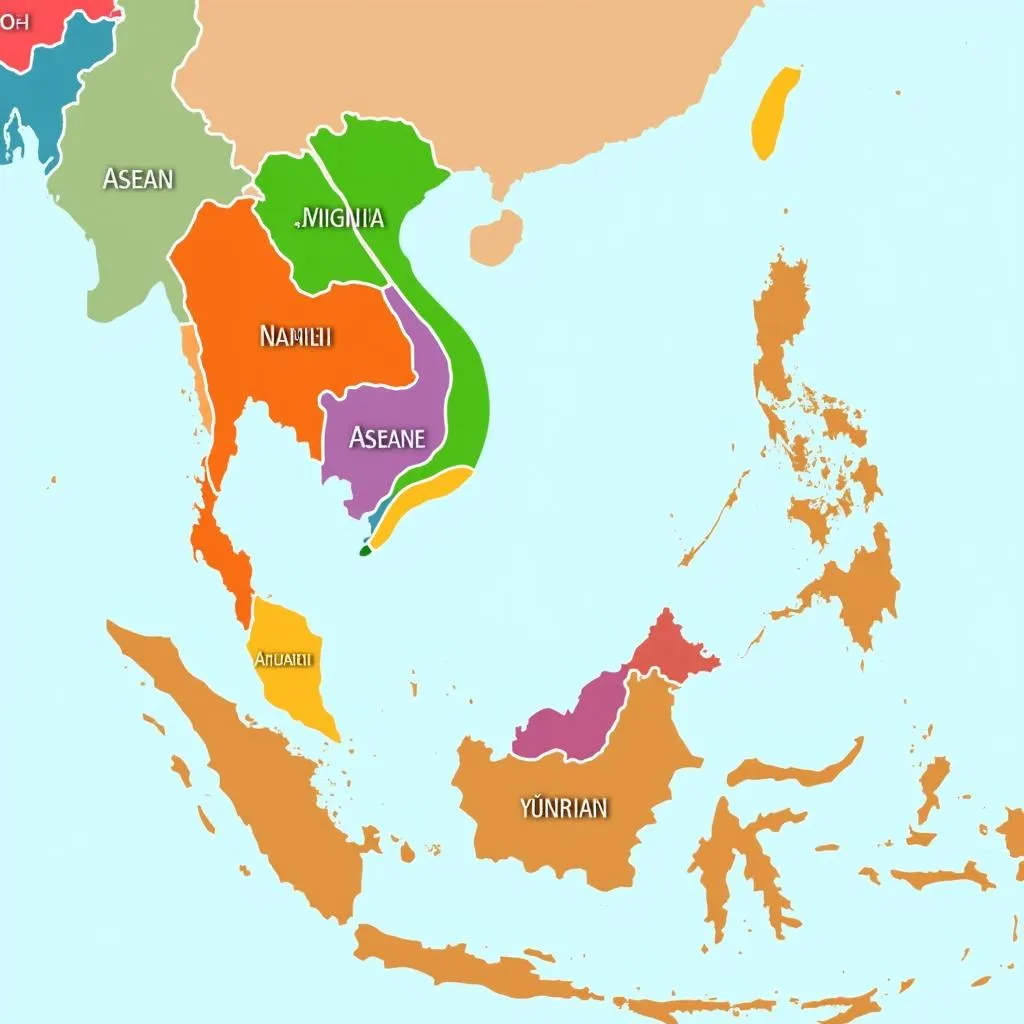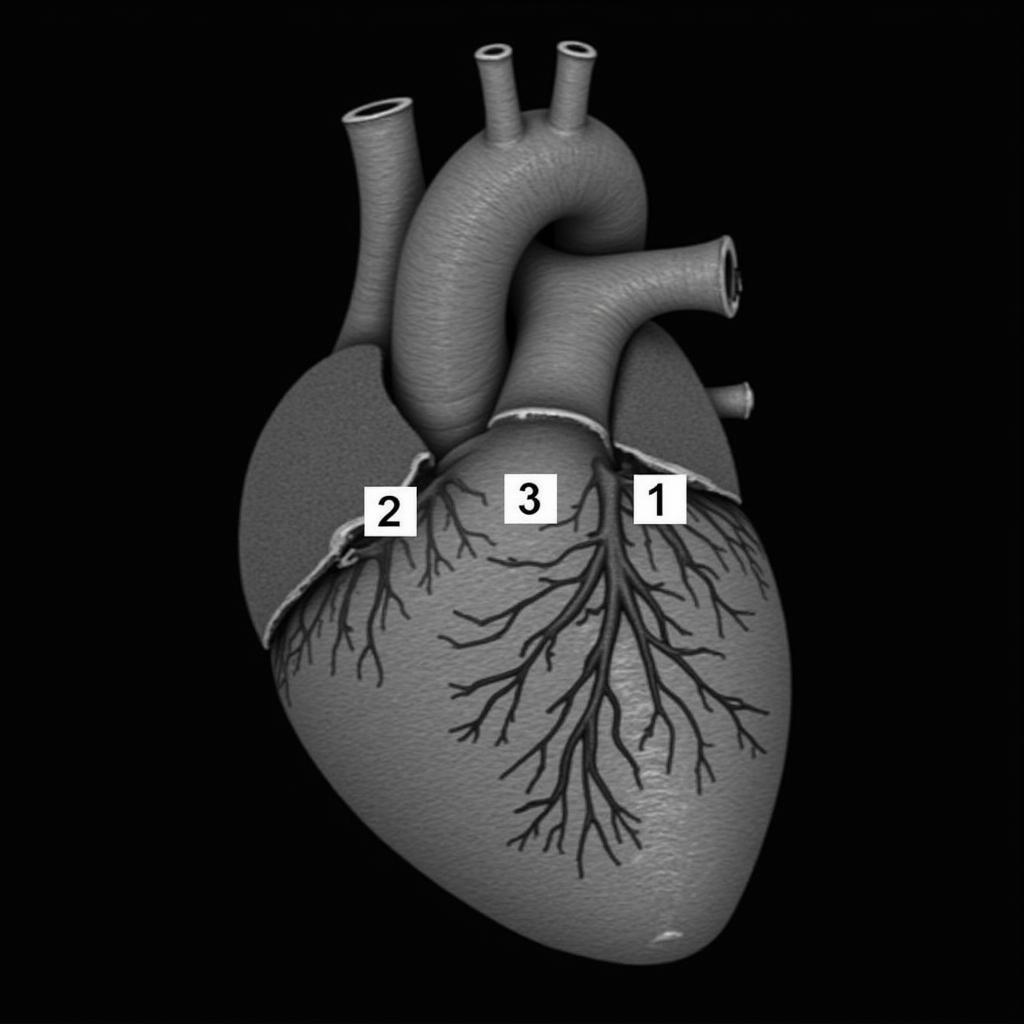The Association of Southeast Asian Nations (ASEAN) is a dynamic intergovernmental organization comprising 10 member countries. Established in 1967, ASEAN aims to foster political, economic, and socio-cultural cooperation among its diverse members. This article delves into the heart of ASEAN integration, exploring the individual nations and the collective power they wield on the global stage.
 Map of ASEAN Member Countries
Map of ASEAN Member Countries
The Pillars of ASEAN Integration
ASEAN integration rests on three fundamental pillars:
1. Political-Security Community: This pillar emphasizes dialogue and collaboration on political and security issues. It promotes regional peace and stability through confidence-building measures, preventive diplomacy, and conflict resolution mechanisms.
2. Economic Community: The economic pillar aims to establish ASEAN as a single market and production base. It focuses on trade liberalization, investment facilitation, and economic integration initiatives to enhance regional competitiveness.
3. Socio-Cultural Community: This pillar aims to foster a sense of shared identity and community among ASEAN citizens. It focuses on cooperation in education, culture, health, and social development to improve the quality of life for people across the region.
10 Member Countries, 10 Unique Identities
Each of the 10 member countries contributes a unique tapestry of culture, history, and resources to the ASEAN community:
1. Brunei Darussalam
Known for its pristine rainforests and abundant oil reserves, Brunei Darussalam is a small but wealthy nation on the northern coast of Borneo. Its commitment to environmental conservation and sustainable development makes it a leader in the region.
2. Cambodia
Cambodia, home to the majestic Angkor Wat temple complex, has emerged as a vibrant tourist destination. The nation’s rich history and cultural heritage, coupled with its resilient people, make it a compelling story of resurgence and growth.
3. Indonesia
An archipelago of over 17,000 islands, Indonesia is the world’s largest island country. Its diverse cultural heritage, vast natural resources, and burgeoning economy make it a major player in Southeast Asia.
 Traditional Indonesian Batik Textiles
Traditional Indonesian Batik Textiles
4. Lao PDR
Known for its laid-back charm and stunning natural landscapes, Lao PDR is a landlocked country in Southeast Asia. Its commitment to sustainable development and its rich cultural heritage make it a hidden gem in the region.
5. Malaysia
A melting pot of cultures, Malaysia boasts modern cities like Kuala Lumpur alongside ancient rainforests and pristine beaches. Its economic dynamism and strategic location make it a key player in regional trade and investment.
6. Myanmar
Myanmar, also known as Burma, is a country of immense beauty and cultural significance. Its journey towards democracy and economic development is closely watched by the international community.
7. Philippines
An archipelago of over 7,000 islands, the Philippines is known for its warm hospitality, stunning beaches, and vibrant culture. Its English proficiency and skilled workforce make it a hub for outsourcing and tourism.
8. Singapore
A bustling city-state known for its economic prowess and technological innovation, Singapore is a global financial center. Its strategic location and efficient infrastructure make it a gateway to Southeast Asia.
 Singapore's Iconic Skyline at Night
Singapore's Iconic Skyline at Night
9. Thailand
Famed for its idyllic beaches, ancient temples, and delectable cuisine, Thailand is a major tourist destination. Its rich cultural heritage and vibrant economy contribute significantly to the ASEAN region.
10. Vietnam
A country of breathtaking landscapes, from the rice paddies of the Mekong Delta to the bustling streets of Hanoi, Vietnam has experienced rapid economic growth in recent years. Its entrepreneurial spirit and resilient people make it a force to be reckoned with.
ASEAN Integration: A Work in Progress
While ASEAN has made significant strides towards integration, challenges remain. Disparities in economic development, political systems, and levels of infrastructure require continued dialogue and collaboration.
The Future of ASEAN Integration
The 10 member countries of ASEAN are committed to deepening integration and enhancing their collective influence. Key priorities include:
- Strengthening economic connectivity through trade facilitation, infrastructure development, and digital integration.
- Promoting innovation and digital transformation to harness the opportunities of the Fourth Industrial Revolution.
- Enhancing regional security cooperation to address transnational challenges such as terrorism, cybersecurity threats, and climate change.
- Fostering greater people-to-people connectivity through educational exchanges, cultural programs, and tourism initiatives.
Conclusion
The 10 Member Countries Of Asean Integration represent a tapestry of cultures, economies, and aspirations. Through collaboration and dialogue, they are working towards a shared vision of a peaceful, prosperous, and interconnected Southeast Asia. As ASEAN continues to evolve, it holds immense potential to become a global economic powerhouse and a driving force for positive change in the 21st century.


